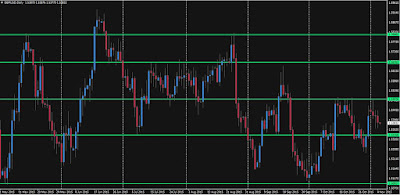Many beginning FOREX traders are captivated by the allure of easy money. FOREX
websites offer 'risk-free' trading, 'high returns' 'low investment' – these claims have a grain
of truth in them, but the reality of FOREX is a bit more complex.
There are two common mistakes that many beginner traders make – trading without a
strategy and letting emotions rule their decisions. After opening a FOREX account it may
be tempting to dive right in and start trading. Watching the movements of EUR/USD for
example, you may feel that you are letting an opportunity pass you by if you don't enter
the market immediately. You buy and watch the market move against you. You panic
and sell, only to see the market recover.
This kind of undisciplined approach to FOREX is guaranteed to lose you money. FOREX
traders need to have a rational trading strategy and not allow emotions to rule their
trading decisions.
To make rational trading decisions the FOREX trader must be well-educated in market
movements. He must be able to apply technical studies to charts and plot out entry and
exit points. He must take advantage of the various types of orders to minimize his risk
and maximize his profit.
The first step in becoming a successful FOREX trader is to understand the market and
the forces behind it. Who trades FOREX and why? Who is successful and why are they
successful? This knowledge will allow you to identify successful trading strategies and
use them as models for your own.
There are 5 major groups of investors who participate in FOREX – Governments, Banks,
Corporations, Investment Funds, and traders. Each group has varying objectives, but the
one thing that all the groups (except traders) have in common is external control. Every
organization has rules and guidelines for trading currencies and can be held accountable
for their trading decisions. Individual traders, on the other hand, are accountable only to
themselves.
This means that the trader who lacks rules and guidelines is playing a losing game.
Large organizations and educated traders approach the FOREX with strategies, and if
you hope to succeed as a FOREX trader you must play by the same rules.
Money Management
Money management is part and parcel of any trading strategy. Besides knowing which
currencies to trade and recognizing entry and exit signals, the successful trader has to
manage his resources and integrate money management into his trading plan. Position
size, margin, recent profits and losses, and contingency plans all need to be considered
before entering the market.
There are various strategies for approaching money management. Many of them rely on
the calculation of core equity. Core equity is your starting balance minus the money used
in open positions. If the starting balance is $10,000 and you have $1000 in open positions
your core equity is $9000.
When entering a position try to limit risk to 1% to 3% of each trade. This means that if you
are trading a standard FOREX lot of $100,000 you should limit your risk to $1000 to $3000
– preferably $1000. You do this by placing a stop loss order 100 pips (when 1 pip = $10)
above or below your entry position.
As your core equity rises or falls you can adjust the dollar amount of your risk. With a
starting balance of $10,000 and one open position your core equity is $9000. If you wish
to add a second open position, your core equity would fall to $8000 and you should limit
your risk to $900. Risk in a third position should be limited to $800.
By the same principal you can also raise your risk level as your core equity rises. If you
have been trading successfully and made a $5000 profit, your core equity is now $15,000.
You could raise your risk to $1500 per transaction. Alternatively, you could risk more from
the profit than from the original starting balance. Some traders may risk up to 5% against
their realized profits ($5,000 on a $100,000 lot) for greater profit potential.



